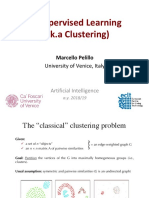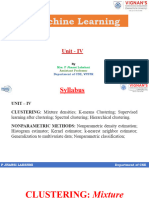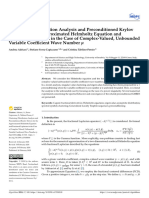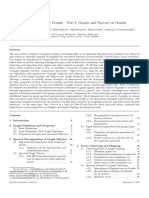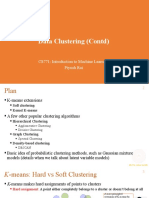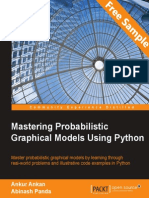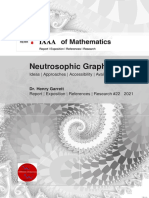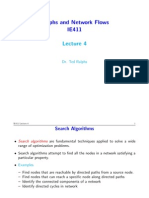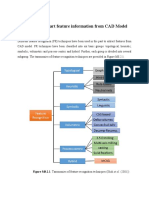0% found this document useful (0 votes)
61 views11 pagesMath 118: Mathematical Methods of Data Theory: Lecture 9: Graphs and Spectral Clustering
This document provides an overview of spectral clustering and graphs. It discusses how graphs can be represented by adjacency matrices and graph Laplacians. It then explains that finding clusters in graphs is NP-hard, so spectral clustering approximates the solution by relaxing the problem and solving for the second eigenvector of the graph Laplacian. Finally, it analyzes spectral clustering and shows that the solution approximates minimizing the ratio cut of the graph by assigning vertices to clusters based on the signs of the second eigenvector.
Uploaded by
EZ112Copyright
© © All Rights Reserved
We take content rights seriously. If you suspect this is your content, claim it here.
Available Formats
Download as PDF, TXT or read online on Scribd
0% found this document useful (0 votes)
61 views11 pagesMath 118: Mathematical Methods of Data Theory: Lecture 9: Graphs and Spectral Clustering
This document provides an overview of spectral clustering and graphs. It discusses how graphs can be represented by adjacency matrices and graph Laplacians. It then explains that finding clusters in graphs is NP-hard, so spectral clustering approximates the solution by relaxing the problem and solving for the second eigenvector of the graph Laplacian. Finally, it analyzes spectral clustering and shows that the solution approximates minimizing the ratio cut of the graph by assigning vertices to clusters based on the signs of the second eigenvector.
Uploaded by
EZ112Copyright
© © All Rights Reserved
We take content rights seriously. If you suspect this is your content, claim it here.
Available Formats
Download as PDF, TXT or read online on Scribd
/ 11





